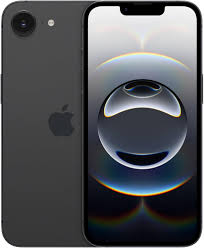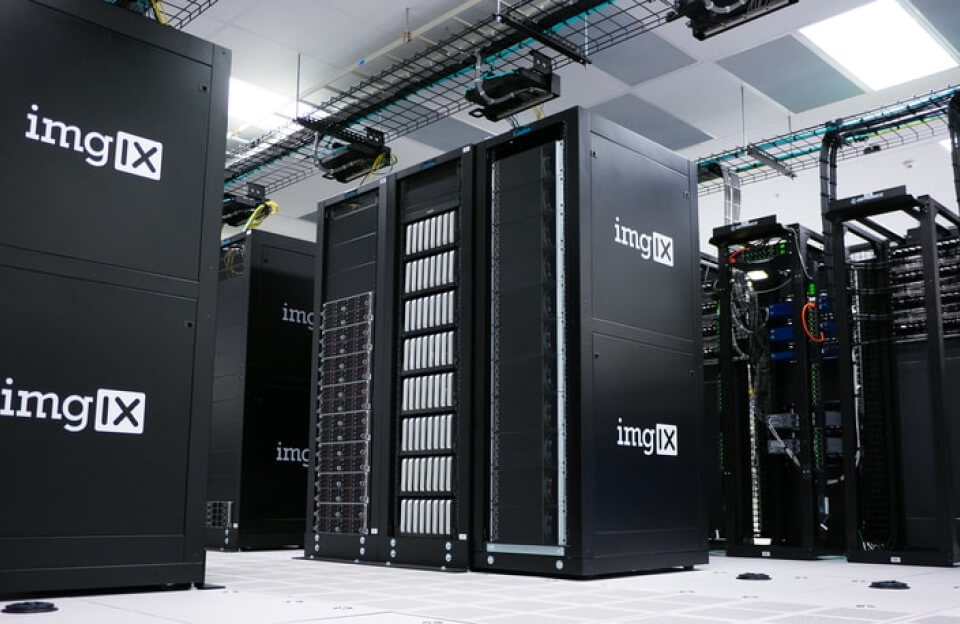The annual unveiling of Apple’s new iPhone lineup always ignites fervent discussions and meticulous comparisons among tech enthusiasts and everyday consumers alike. With the potential introduction of an “e” variant alongside the standard model, the decision-making process for your next smartphone upgrade could become even more nuanced. This comprehensive article serves as “iPhone 16e vs. iPhone 16: Your Essential Guide to Choosing the Right Next-Gen Device,” aiming to dissect every rumored and anticipated difference, helping you make an informed choice that perfectly aligns with your needs, budget, and expectations.

Historically, Apple has employed various strategies to differentiate its iPhone offerings, from “Plus” and “Mini” designations to “Pro” and “Pro Max” tiers. The speculative emergence of an “iPhone 16e” suggests a possible new direction: a device that might offer a more accessible entry point into the latest generation without sacrificing the core Apple experience entirely. But what exactly might the “e” stand for? “Essential”? “Economical”? “Enhanced”? Regardless of the nomenclature, understanding the precise distinctions between the theoretical iPhone 16e and the standard iPhone 16 will be paramount. This guide will delve into every anticipated facet, ensuring you have all the information necessary to determine which model is truly your ideal next-gen companion.
Let us embark on a detailed exploration of the expected battle between the iPhone 16e and the iPhone 16.
Design and Build Quality: A Familiar Yet Differentiated Aesthetic
When a new iPhone is introduced, its physical appearance is often the first thing to capture attention. Both the iPhone 16e and the iPhone 16 are expected to maintain Apple’s signature premium aesthetic, characterized by sleek lines, durable materials, and meticulous craftsmanship. However, subtle yet significant differences in design and build quality are highly probable, mirroring Apple’s past strategies for product segmentation.
The standard iPhone 16 is likely to continue the evolution of its predecessor’s design language, potentially featuring refined edges, new material finishes, and perhaps even a subtle shift in the camera module’s arrangement. Expect a robust construction, possibly utilizing a high-grade aluminum frame and the latest iteration of Ceramic Shield glass on both the front and back for enhanced durability. Color options for the iPhone 16 are typically broader, often including vibrant and sophisticated hues.
The iPhone 16e, on the other hand, might introduce cost-saving measures through its build. While still undeniably Apple in its look and feel, it could potentially utilize slightly different materials. For instance, the frame might be a less premium aluminum alloy, or the back glass might be a standard variant rather than the more advanced Ceramic Shield. The “e” model might also feature slightly thicker bezels around the display, a common differentiator for more budget-conscious variants. Furthermore, the color palette for the iPhone 16e could be more limited, focusing on classic, universally appealing shades. The overall form factor might also see minor variations; while the general dimensions could be similar to the standard 16, a fractionally thicker profile or a slightly heavier feel could be present due to internal component choices or cooling solutions. Understanding these subtle design variations is a key component of “iPhone 16e vs. iPhone 16: Your Essential Guide to Choosing the Right Next-Gen Device.”
Display Technology: The Window to Your Digital World
The display is arguably the most interactive component of any smartphone, and here, we anticipate clear distinctions between the iPhone 16e and the iPhone 16. Apple is renowned for its high-quality Retina and Super Retina XDR displays, but cost optimization almost invariably translates to differences in screen technology.
The iPhone 16 is expected to boast a more advanced display, likely a Super Retina XDR OLED panel with superior brightness, contrast ratios, and color accuracy. It’s also highly probable that the standard iPhone 16 will feature ProMotion technology, offering adaptive refresh rates up to 120Hz. This results in incredibly smooth scrolling, fluid animations, and a more responsive feel, particularly noticeable in gaming and fast-paced content. Always-On Display functionality, which keeps essential information visible on a dimmed screen, is also a strong candidate for the iPhone 16, building on capabilities introduced in previous Pro models.
The iPhone 16e, to maintain its “economical” positioning, will likely feature a more standard OLED display, or perhaps even a high-quality LCD panel, though an OLED is more probable given recent trends. While still offering excellent visuals for most users, it would almost certainly be limited to a 60Hz refresh rate. This difference, while not immediately apparent to everyone, becomes noticeable side-by-side or during tasks that benefit from higher refresh rates. Peak brightness levels might also be lower on the 16e, potentially impacting outdoor visibility under direct sunlight. Furthermore, features like Always-On Display might be omitted from the 16e to conserve power and reduce manufacturing costs. For users who prioritize a silky-smooth visual experience and vibrant, adaptable displays, the iPhone 16 would be the clear winner in this category.
Performance: Power Under the Hood
At the heart of every iPhone lies its Apple-designed silicon, and the performance aspect is where the “e” model might diverge most significantly from the standard version. Apple typically introduces a new generation of its A-series Bionic chip with each flagship release.
The iPhone 16 is virtually guaranteed to feature the very latest iteration of Apple’s mobile processor, let’s say the A18 Bionic chip. This chip would represent a significant leap in CPU and GPU performance, delivering unparalleled speed for demanding applications, graphically intensive games, and complex AI tasks. It would also likely include an enhanced Neural Engine for advanced machine learning capabilities, powering features like improved computational photography, voice processing, and augmented reality experiences. With this cutting-edge chip, the iPhone 16 would offer future-proof performance for years to come.
The iPhone 16e, on the other hand, might employ a slightly older, yet still highly capable, A-series chip. For instance, it could utilize the A17 Bionic chip (the chip found in the previous generation’s Pro models) or a slightly down-clocked version of the current A18. While still providing excellent performance for everyday tasks, web Browse, social media, and most games, it wouldn’t match the raw power and future-proofing of the standard iPhone 16. The Neural Engine might also be a generation behind, potentially affecting the speed and sophistication of some AI-driven features. For users who are not hardcore gamers or do not rely on extremely demanding professional applications, the performance of the iPhone 16e would still be more than adequate, offering a great balance between power and cost. However, for those who demand the absolute best in mobile processing, the iPhone 16 would be the undisputed choice.
Camera System: Capturing Life’s Moments
The camera system is often a major deciding factor for smartphone buyers, and Apple consistently pushes boundaries in this area. Here, we anticipate clear differentiations between the iPhone 16e and the iPhone 16.
The standard iPhone 16 is expected to feature a more advanced dual-camera system, likely including a larger main sensor for improved low-light performance, enhanced optical image stabilization (OIS), and possibly new computational photography features. It could introduce improvements to features like Cinematic Mode, Photographic Styles, and Deep Fusion. The Ultra Wide camera might also see upgrades, offering better detail and less distortion. Video recording capabilities, including higher resolution and frame rate options, along with advanced stabilization, would be a strong suit for the iPhone 16. ProRes video recording, while typically a Pro model feature, could see some form of limited inclusion.
The iPhone 16e, while still offering a very capable camera experience, would likely feature a less sophisticated setup. It might stick with a similar main sensor to the previous year’s standard model, possibly with a slightly less advanced OIS system. The Ultra Wide camera might also be a step down in resolution or aperture. Computational photography features could be present but perhaps less refined or with fewer options than on the iPhone 16. Video recording capabilities would still be excellent for most users, but without the absolute cutting-edge features of its more expensive sibling. For casual photographers and those who primarily share photos on social media, the iPhone 16e’s camera would be more than sufficient. However, for photography enthusiasts who demand the best possible image quality, advanced features, and professional-grade video capabilities, the iPhone 16 would undoubtedly be the superior choice.
Battery Life and Charging: Powering Your Day
Battery life is a constant concern for smartphone users, and while Apple continuously optimizes power efficiency, differences between models are possible.
The iPhone 16 is likely to come with a larger battery capacity compared to the 16e, leveraging its potentially more efficient A18 Bionic chip and optimized software. This combination would translate to superior overall battery endurance, allowing for longer usage times throughout the day, even with demanding tasks. Fast charging capabilities are expected to be robust, with support for high wattage adapters. MagSafe charging would also be a standard feature, offering convenient wireless charging and accessory attachment.
The iPhone 16e, while still providing good battery life for most users, might feature a slightly smaller battery. This could lead to a marginally shorter usage time per charge, particularly if the display or chip are less power-efficient than the standard 16. Fast charging would still be supported, but perhaps at a slightly lower peak wattage. MagSafe charging would almost certainly be included, as it’s a core Apple ecosystem feature. For users who don’t push their phones to the limit daily, the 16e’s battery life would be perfectly acceptable. However, for heavy users or those who frequently travel, the potentially extended endurance of the iPhone 16 could be a significant advantage.
Connectivity: Staying Connected
Connectivity features are crucial in our interconnected world, and both models would support the latest standards, though with potential subtle differences.
Both the iPhone 16e and iPhone 16 would undoubtedly support 5G connectivity, ensuring fast mobile data speeds wherever available. Wi-Fi standards would also be up-to-date, likely Wi-Fi 6E for faster and more stable wireless connections. However, the iPhone 16 might incorporate more advanced modem technology, potentially leading to slightly better 5G reception in challenging areas or faster peak speeds. Bluetooth versions would likely be identical. One area of potential differentiation could be the type of USB port. While the iPhone 16 is highly likely to feature USB-C with faster data transfer speeds (e.g., USB 3.x), the iPhone 16e might opt for a slower USB-C port (e.g., USB 2.0 speeds) to save costs, similar to some previous base models. This would primarily impact users who frequently transfer large files to and from their computer.
Storage Options: Room for Everything
Storage capacity is a straightforward differentiator, and Apple typically uses this to create distinct tiers within its lineup.
The iPhone 16e might start with a more modest base storage option, perhaps 128GB or even 64GB if Apple pushes for an extremely budget-friendly option, with higher tiers available at an increased cost. The iPhone 16, on the other hand, would likely start at 256GB, offering more baseline storage for apps, photos, videos, and games, with options for 512GB and 1TB. This distinction directly impacts the overall cost and the amount of digital content you can comfortably store on your device without relying on cloud services.
Price: The Ultimate Differentiator
Ultimately, the primary reason for the existence of an “e” model is likely to be its price point.
The iPhone 16e is expected to be positioned as the more affordable entry into the iPhone 16 generation, offering a significant saving compared to the standard iPhone 16. This price difference would be the most compelling factor for many consumers, making the latest Apple technology more accessible. The standard iPhone 16 would occupy the traditional flagship price segment, offering a balance of premium features without venturing into the “Pro” model’s higher price territory. Understanding the expected price difference is a core element of “iPhone 16e vs. iPhone 16: Your Essential Guide to Choosing the Right Next-Gen Device.”
Software Experience: The Unifying Factor
One area where both the iPhone 16e and iPhone 16 will be virtually identical is the software experience. Both devices will run the same version of iOS, featuring the latest updates, security patches, and access to the vast Apple App Store. This means users of both models will benefit from Apple’s intuitive interface, robust privacy features, seamless ecosystem integration (AirDrop, Handoff, iCloud), and ongoing software support for many years. Any differences in software features would be tied to the hardware capabilities (e.g., ProMotion display features, advanced camera modes that require specific sensors).
Who Should Choose the iPhone 16e?
The iPhone 16e would be an ideal choice for:
Budget-conscious users: Those who want the latest iPhone generation without breaking the bank.
Casual users: Individuals who primarily use their phone for communication, social media, web Browse, and light gaming.
Students or first-time iPhone owners: A great entry point into the Apple ecosystem.
Users who prioritize core functionality: Those who value a reliable and secure smartphone experience above cutting-edge features.
Users upgrading from much older iPhones: Even with its potential compromises, the 16e would still offer a significant upgrade in performance, camera, and overall experience compared to iPhones several generations old.
Who Should Choose the iPhone 16?

The iPhone 16 would be the preferred option for:
Users who demand the latest performance: Gamers, content creators, or anyone who runs demanding applications.
Photography and videography enthusiasts: Those who want the best possible still images and video quality from their smartphone.
Users who prioritize display quality: Individuals who appreciate high refresh rates, superior brightness, and advanced display technologies.
Tech enthusiasts: Those who want to experience the very latest hardware innovations from Apple.
Users who want future-proofing: The more powerful chip and advanced features will likely ensure the iPhone 16 remains highly capable for a longer period.
Users who need more baseline storage: The potentially higher starting storage tier will appeal to those with large media libraries or numerous applications.
The Deciding Factor: A Holistic Perspective
Ultimately, the decision between the iPhone 16e and the iPhone 16 boils down to a careful assessment of your personal priorities and budget. Do you crave the absolute bleeding edge of mobile technology, or are you content with a highly capable and reliable device that offers excellent value?
If price is the absolute top priority, and you are willing to make minor compromises on raw performance, camera sophistication, and display refresh rate, the iPhone 16e would be the logical and sensible choice. It promises to deliver the core iPhone experience at a more accessible price point.
If you demand the latest and greatest in performance, camera capabilities, and display fluidity, and your budget allows, the iPhone 16 will undoubtedly offer a more premium and future-proof experience. It will be the powerhouse, designed for users who push their devices to the limit and appreciate every technological refinement.
This comprehensive guide, “iPhone 16e vs. iPhone 16: Your Essential Guide to Choosing the Right Next-Gen Device,” has aimed to illuminate every anticipated difference between these two hypothetical yet probable models. By weighing the distinctions in design, display, performance, camera, battery, connectivity, storage, and price against your individual needs and financial considerations, you can confidently navigate Apple’s next-gen lineup and select the iPhone that truly empowers your digital life. The choice is personal, but with this detailed breakdown, it will be an informed one.

